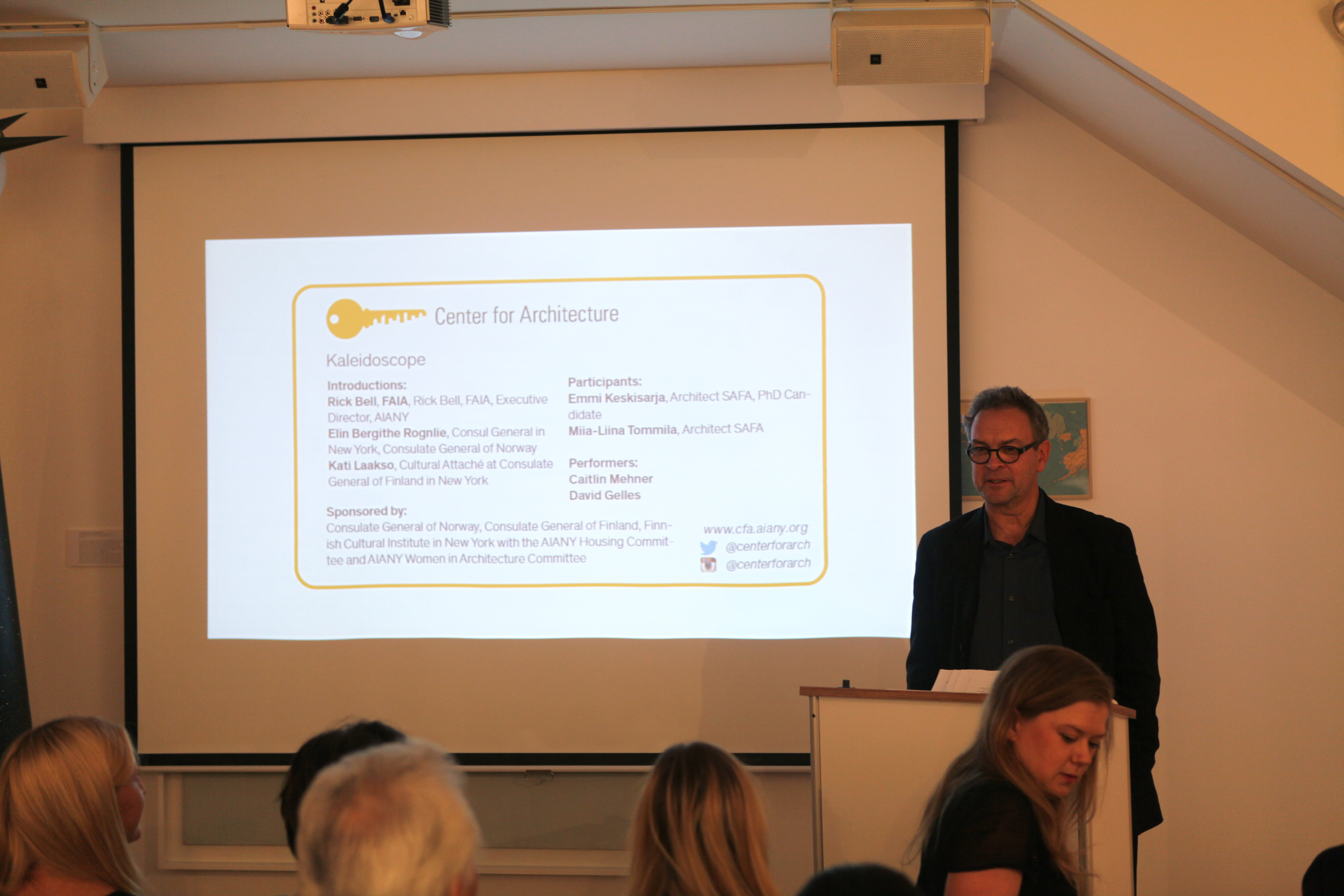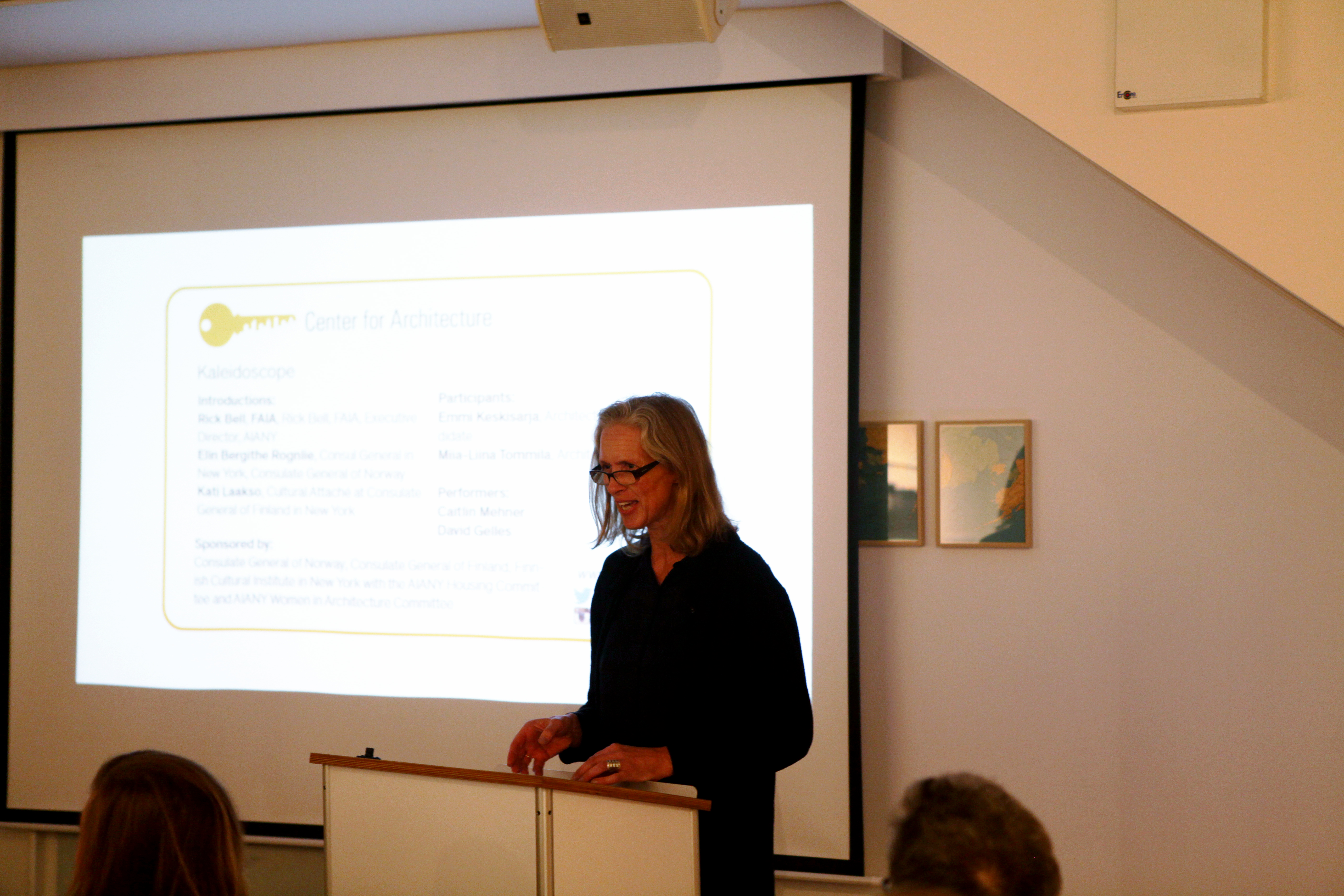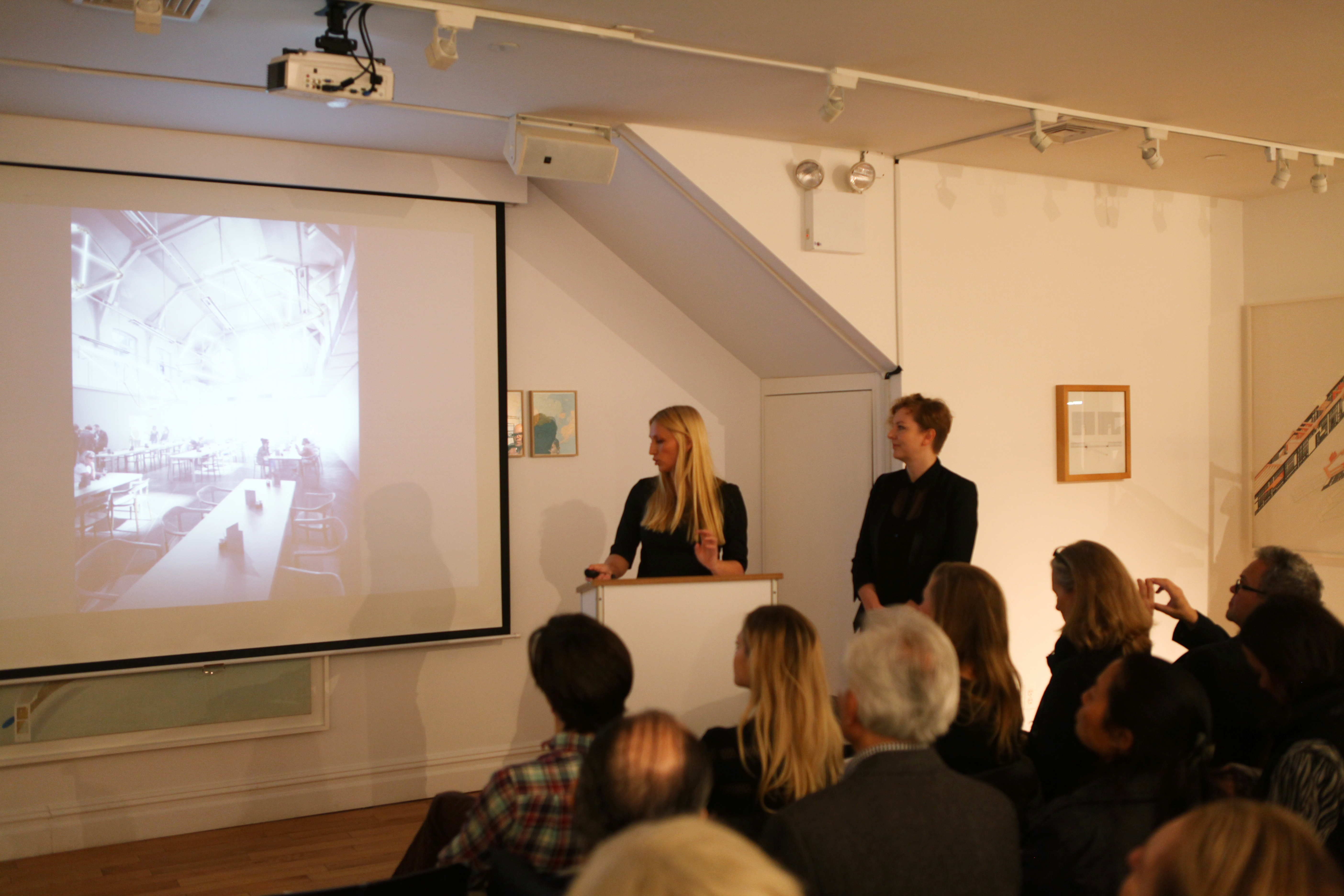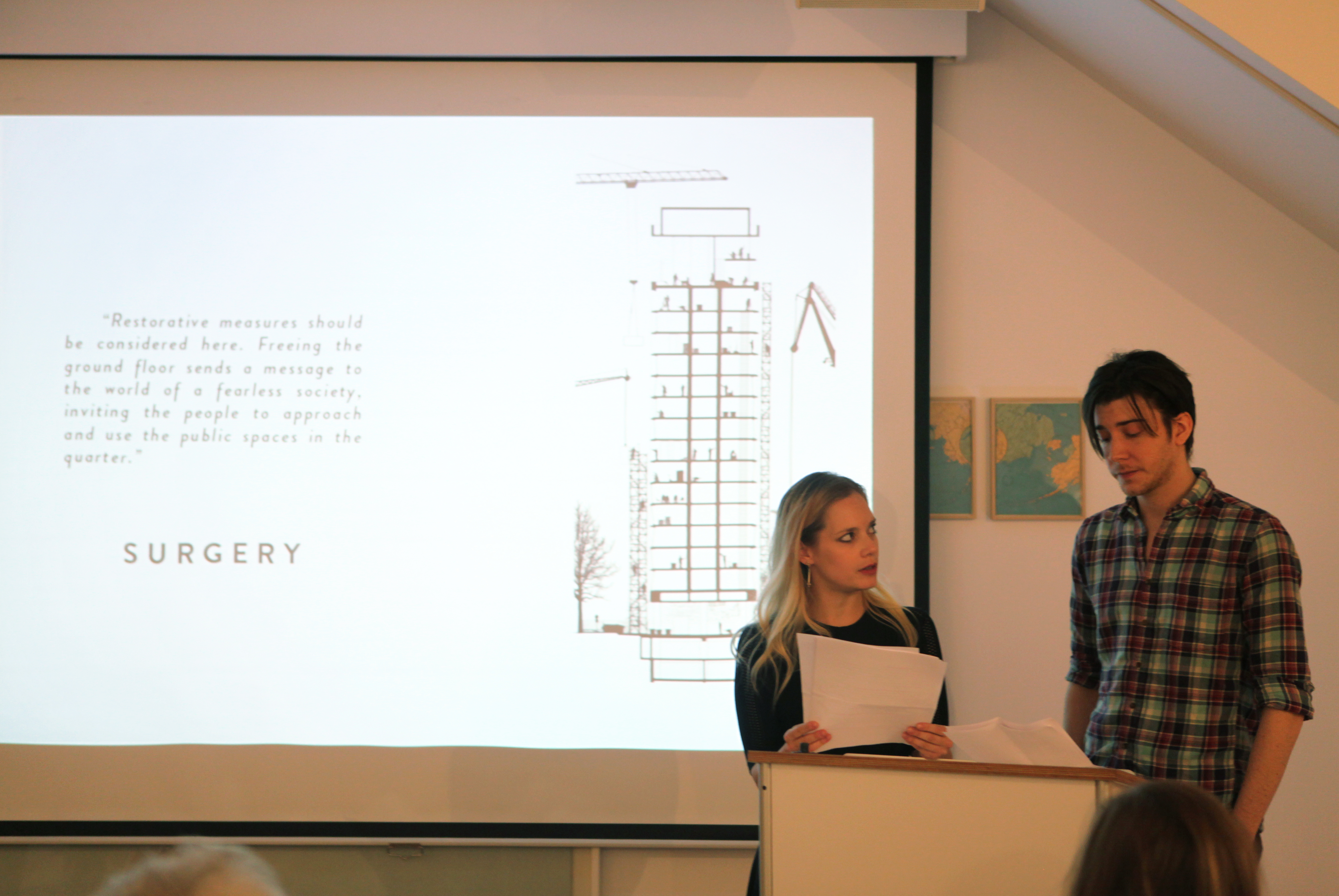by James Way
Characterized by various viewpoints, approaches, and processes, Kaleidoscope, an all-female Norwegian-Finnish architecture collective, synthesizes architecture and art through inter- and cross-disciplinary practices. Kati Laakso, cultural attaché at Consulate General of Finland in New York, introduced the group as one that deftly approaches the debate of architecture, urbanism, and city planning, a debate she finds particularly acute in Finland, as recently highlighted by the Guggenheim Helsinki competition.
The group introduced its approach to the standing-room-only audience with its winning entry for Europan 12. The master plan provides a framework for a national heritage site in Asker, Norway, containing an abandoned psychiatric hospital. The collaborative devised seven strategies and programs that would create a framework to revitalize the area. From landscaping and open spaces to a university outpost, permanent dwellings, and tourist lodging, the variety of uses and populations would support a self-sustaining town reminiscent of mixed-use cultural districts.
Kaleidoscope used similar strategies for Phantom Pain project. Furthering the inter-disciplinary approach, the group included a doctor in its research, which culminated in a three-act play. Architect Miia-Liina Tommila described it as a way to challenge the process, engage viewers, and to be simultaneously close to and distant from the subject matter. The play is a dialog between doctor and patient – the Høyblokka (High Block), which was recited by Caitlin Mehner and David Gelles. Following diagnosis of the building’s ailment, it proceeds through surgery and rehabilitation, and envisions a “building that describes a society that fights violence through creative, inventive growth.” The project responds to the 2011 terrorist attack in Oslo.
Architect Emmi Keskisarja acknowledged the historical use of medical metaphors and processes in architecture, and found it particularly apt for approaching the site as a patient – abandoned and coma-like. The project explored options of resuscitation, amputation, surgical intervention, and outright burial. Of the affected buildings, the Høyblokka is currently shielded from the public by plastic wrapping. Kaleidoscope’s vision revives the structure with surgical interventions yielding a new entry and façade, and a gallery at the building’s crown. Inviting the public into the building creates a dialog with its history, and comments on what a civic building should be. The opposite, demolition, they contend, induces phantom pain, the psychological agony induced by an amputated limb.
Elin Bergithe Rognlie, Consul General of the Consulate General of Norway, recognized the difficulty of rebuilding a government building in a downtown site that is both secure and speaks to past, present, and future. Kaleidoscope’s proposition certainly provides a framework for flexible optimistic occupation without erasing the remnants. Associations to the World Trade Center a decade earlier were quickly felt. AIANY Executive Director Rick Bell, FAIA, deftly summarized the parallel as “a perception of vulnerability… a sense of pain and wonder” in which the buildings symbolize the attacks. Kaleidoscope acknowledges various voices, and frames what could happen next in an optimistic project.
James Way, Assoc. AIA, Marketing Manager at Dattner Architects, frequently contributes to eOculus.
Event: Kaleidoscope
Location: Center for Architecture, 11.25.14
Speakers: Emmi Keskisarja, Architect SAFA, PhD Candidate; Miia-Liina Tommila, Architect, Finnish Association of Architects/SAFA; Rick Bell, FAIA, Executive Director, AIANY; Elin Bergithe Rognlie, Consul General in New York, Consulate General of Norway; and Kati Laakso, Cultural Attaché Consulate General of Finland in New York
Performers: Caitlin Mehner and David Gelles
Organizers: Center for Architecture and Kaleidoscope.
Sponsors: Consulate General of Norway, Consulate General of Finland, Finnish Cultural Institute in New York
Co-sponsors: AIANY Housing Committee and AIANY Women in Architecture Committee




